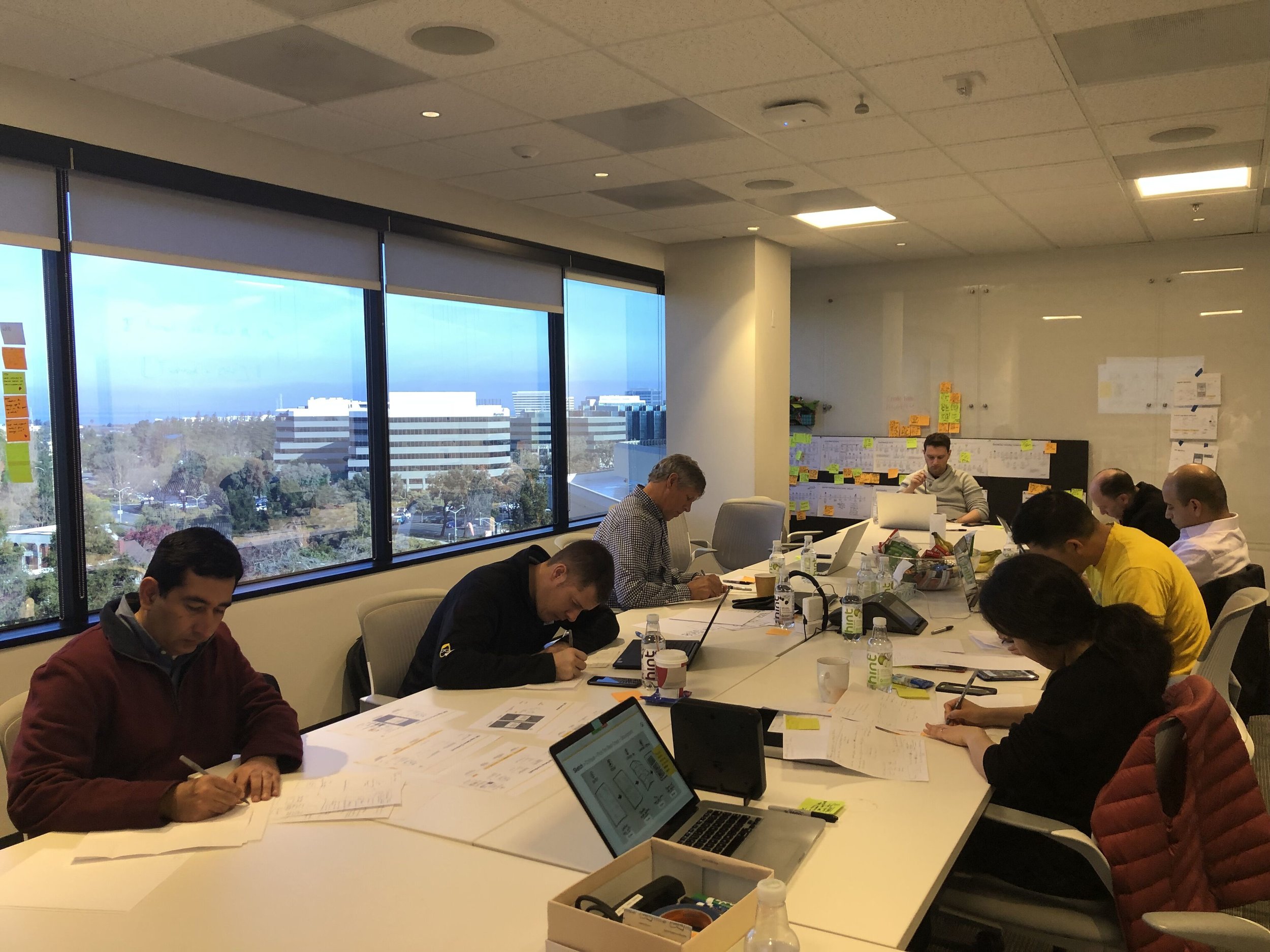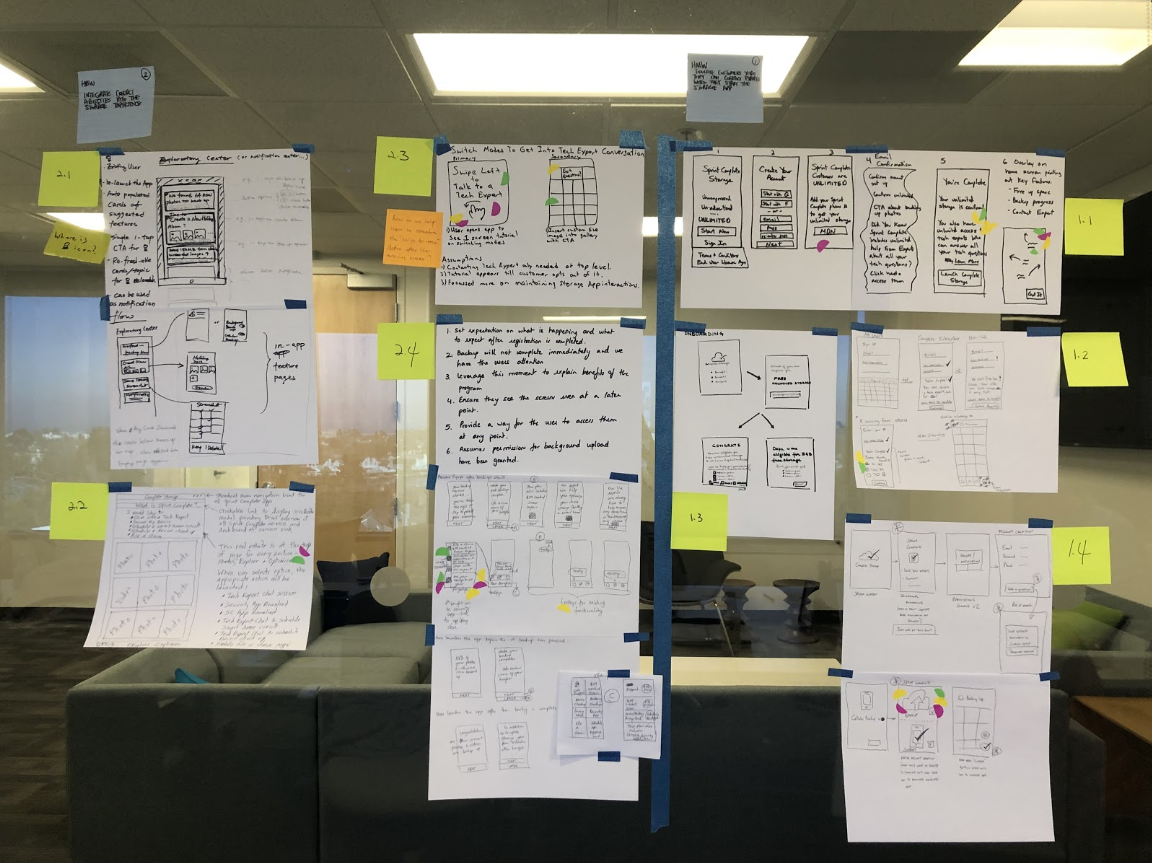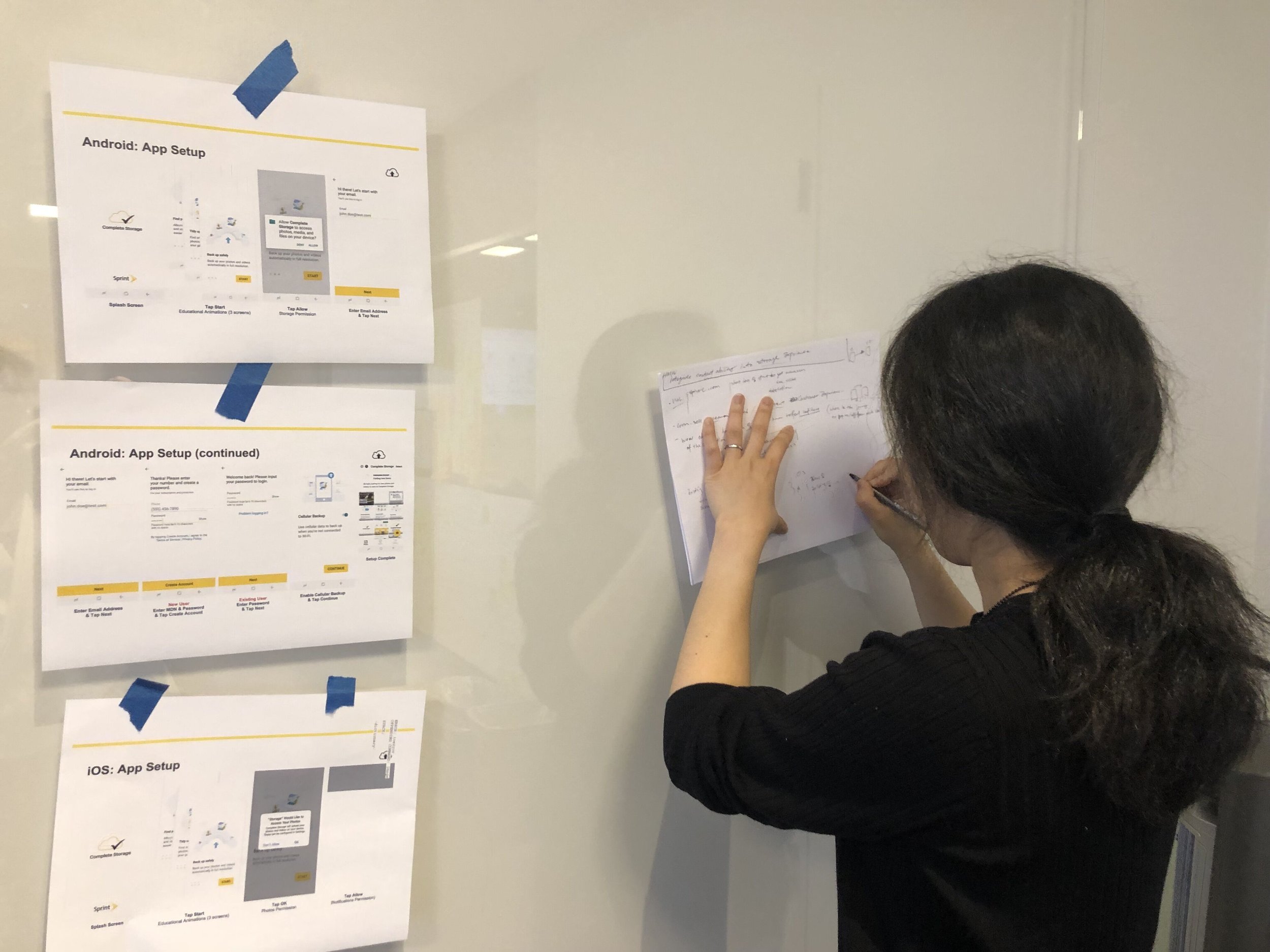Better user engagement on expert support
Led the design effort in launching and iterating
on user account and expert support engagement.
iOS & Android
Background context
Sprint Complete Storage(former Sprint Gallery) is a consumer-facing mobile application to help a customer to backup their photos and videos. Most of the customers have our app as part of the insurance bundle they purchased.
While our product has great engagement rate, not all the users fully aware of the rest of the benefits they were registered for.
In order to help our users to clearly understand the registered account benefit, a group of stakeholders get together to kickoff a 4-day design sprint to tackle the initial approach, then followed with 2 weeks of full design process to propose solution that better resonate with the holistic user experience in our product.
Design solution has launched to multiple carriers in early 2019.
Process
Phase 1 - 4-day Design Sprint
We started phase 1 with a 4-day design sprint with a team of experts from product, marketing, customer solution, tech/logistic and design. After the initial exercise on project alignment and scope definition. We set our goals and focused on HMW increase the contact abilities into our existing app product, by providing a meaningful interaction to our users.
My role:
Co-facilitate the ideation, and usability test result synthesis sessions during the design sprint.
Roll up my sleeves and led the prototyping session by generating design concepts, rapid prototype and iterate, to transfer high-level concept into an interactive experience flow for the usability test sessions. (using sketch, invision)
Ideation and prototyping
After the brainstorm sessions with crazy 8s and art museum, we start to map out the existing user journey, and brainstorm on the ideas around different touchpoints of the end-to-end interaction flow and visualized the concept with rapid prototyping.
Test and learn:
We tested the concept prototype with 5 participants, then synthesized the notes by categorizing them into 3 buckets: Behavior, Pain-points, and Opportunities; Among the many insights from the usability test result, we were able to find out the value of the integration to the user, while also learned by doing so, it raises confusions that we should continue work on, in order to provide a meaningful and wholistic product experience to our user.
Key insights
Next step
As an end note of the design sprint, we set our Phase 2 direction to simplify the integrated service message, and to focus on providing a wholistic experience to the product.
Phase 2 - Turning business-driven request into user-centered design approach
Now with the insights from the design sprint, our product team take the full ownership of the project and continued working on it with more user-centered approach, to provide a holistic solution that resonates the overall product experience.
There are two areas I looked into:
What’s the best representation of the expert contact section itself to meet the user need;
How might we better integrate the expert contact ability into the account page’s structure and interaction flow.
More research - go back into user needs
Together with PM and Data Analyst’s help to understand the performance of our existing account/setting feature, I quickly spotted the following insights:
Our user mainly come to these screens to check the registered storage space, learn their account information, turn on/off the backup options; and ask for help from the help center.
There is a constant high number of support request that relevant to the user account information and storage plan.
After reading through over 200 support tickets, I saw clear pattern on repetitive questions and mapped out these scenarios to explain the problem space with my team.
One Typical Use Case
A summary of use cases, key issues and potential UX improvements:
Define design scope
Introduce the benefit early on to set clear expectations
Integrate the expert help with setting page is a positive direction, but we need to optimize the page structure
Ideation/prototype/iteration
Sample of Iterations based on the first identified design scope
Final solution interaction flow
Impact
Significantly reduced the customer support tickets
The “request update“ feature reached to high open rate which helped the team prioritized the self-service project as highly needed feature.







